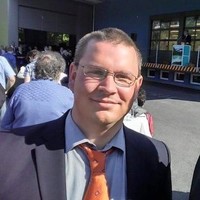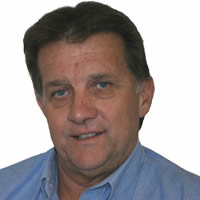Presented at NZ Hydrological Society Technical Workshop 17-20 March 2020
Abstract
After the tragic wild fires in Australia, finally the rain came. The rain helped to stop the fires and eased the situation, but not for long. The situation changed fast and not to the better. The hydrophobic soil was the reason for flooding all over. The challenge in this situation is actually to measure these surface flow conditions–reliably and accurately. When comparing different technologies for flow measurement radar comes out ahead first.
Radar is not influenced by turbidity or any optical disturbance. Therefore surface radars are providing a safe and reliable way of getting the good measurement data. For radar, it does not matter if the measurement is mobile or stationary; the data can be collected locally and on remote sites and is easy to transmit. The data compression is very high so it fits perfectly into existing infrastructures and does not need changes or adaptions to the existing infrastructure. Imagery is very trendy but also has its drawbacks.
For ADCPs, it is the same: there are strong points and there are weak points. Therefore, we will compare imagery and radars to get an overview about the advantages and challenges. Furthermore having a look at a case study to provide insides into the use and capabilities of non-contact radars.
Author bio
 Christoph Sommer received an BSc in computer sciences form the University of applied science in Dornbirn, Austria and an MA degree in “Management, Communication and IT” with specialization of computer science and software management from University of MCI Innsbruck, Austria, in 2012.
Christoph Sommer received an BSc in computer sciences form the University of applied science in Dornbirn, Austria and an MA degree in “Management, Communication and IT” with specialization of computer science and software management from University of MCI Innsbruck, Austria, in 2012.
After his graduation, he started to setup the ISO certification of SOMMER and reorganize the production and manufacturing processes within SOMMER. After the successful ISO certifications and the successful implementation of the new powerful manufacturing processes, he started to set his focus more on the sales and the R&D departments to work with customers and bring in the knowledge from customers into the R&D and the development of new products. In the beginning of 2016 he joined the company’s management board.
Presenter bio
 Mike commenced his role with the Hyquest Solutions in 2006 and brings over 40 years of experience in field hydrology. He holds the Hydrography Certificate with other qualifications in Electrical Principles, Digital Computing, Process Fluid Measurement and Industrial Instrumentation Practice. As a qualified and certified hydrographer he has also prepared and delivered a wide range of training topics in the area of field hydrology to the water industry world-wide.
Mike commenced his role with the Hyquest Solutions in 2006 and brings over 40 years of experience in field hydrology. He holds the Hydrography Certificate with other qualifications in Electrical Principles, Digital Computing, Process Fluid Measurement and Industrial Instrumentation Practice. As a qualified and certified hydrographer he has also prepared and delivered a wide range of training topics in the area of field hydrology to the water industry world-wide.Presentation
To watch the video, you will need your AHA member password sent to members by email

